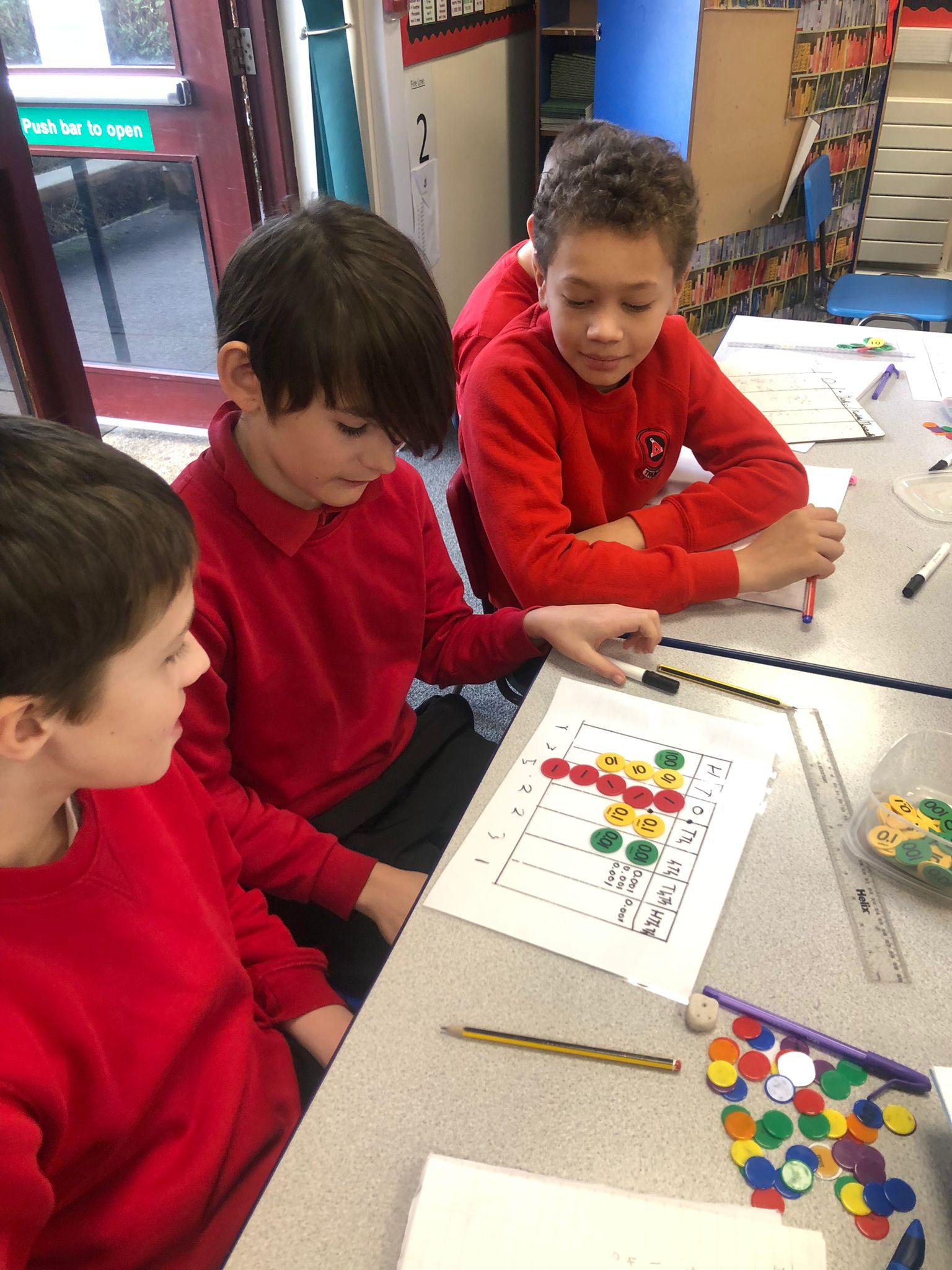Mathematics


Welcome to our page all about Mathematics.
Subject Leader: Eloise Hadwin and Jon Stark
All policies are available on the Policies page.
Our Vision (Intent):
| We hope for pupils to be achieving, or near to achieving, national expectations and showing good progress over their time within our school. We want our pupils to have a passion for learning mathematics and understand its association with real-life skills for their future. By the end of Year 2 pupils will have been taught: Know by heart the multiplication tables 2s 5s, 10s, 3s. Know number bonds to 20. Be precise in using and understanding place value. Read and spell mathematical vocabulary, at a level consistent with their increasing word reading and spelling knowledge at key stage 1. By the end of Year 4 pupils will have been taught: Know by heart the multiplication tables to 12 x 12 and show precision and fluency in their work.Have a quick recall of number bonds to 10, 100, 1000 and beyond.Solve a range of problems, including with simple fractions and decimal place value. Read and spell mathematical vocabulary correctly and confidently, using their growing word reading knowledge and their knowledge of spelling. By the end of Year 6 pupils will have an awareness of and had the experience of: Be fluent in written methods for all four operations, including long multiplication and division, and in working with fractions, decimals, and percentages. Read, spell, and pronounce mathematical vocabulary correctly. Solve a wider range of problems, including increasingly complex properties of numbers and arithmetic. Solve problems demanding efficient written and mental methods of calculation. |
Behind the Vision:
Maths helps us to quantify and understand what we see and experience in the physical world; it is a vital part of life, both as a young person and as an adult. It is hoped that, using the skills they have learned with us, pupils will be able to apply their mathematical knowledge to a range of real-life situations as adults. This relates to number skills, for example in terms of managing household income and expenditure and having the financial understanding to better equip themselves for their future. With a high level of PPG pupils and the fact that our school is situated in a community with high levels socio-economic deprivation, we aim to teach our pupils maths skills that can be used and adapted appropriately for use in future jobs and everyday living.
In order to achieve the vision:
- Learning of Number bonds and times tables to continue to be promoted on a weekly basis with use of award scheme.
- Higher achievement in KS2 at end of Year 6 with a higher proportion of pupils meeting the standard of ‘higher attainer’.
- Development of real-life maths skills and relevance to future lives
Planning and progression of our curriculum:
We base all of our mathematics planning on the White Rose scheme and supplement this where necessary.
Year 1-2
| Year 1 | Place Value Addition and Subtraction Shape Place Value |
Addition and Subtraction Place Value Length and Height Weight and Volume |
Multiplication and Division Fractions Position and Direction Place Value Money Time |
| Year 2 | Place Value Addition and Subtraction Money Multiplication and Division |
Multiplication and Division Statistics Properties of Shape Fractions |
Length and Height Position and Direction Time Mass, Capacity and Temperature |
Year 3-4
| Year 3 | Place Value Addition and Subtraction Multiplication and Division |
Multiplication and Division Money Statistics Length and Perimeter Fractions |
Fractions Time Properties of Shape Mass and Capacity |
| Year 4 | Place Value Addition and Subtraction Length and Perimeter Multiplication and Division |
Multiplication and Division Area Fractions Decimals |
Decimals Money Time Statistics Properties of Shape Position and Direction |
Year 5-6
| Year 5 | Place Value Addition and Subtraction Statistics Multiplication and Division Perimeter and Area |
Multiplication and Division Fractions Decimals and Percentages |
Decimals Properties of Shape Position and Direction Converting Units Volume |
| Year 6 | Place Value Addition, Subtraction, Multiplication and Division Fractions Position and Direction |
Decimals Percentages Algebra Converting Units Perimeter, Area and Volume Ratio |
Statistics Properties of Shape |


